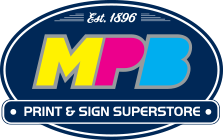Establishing a strong and recognizable brand identity is essential for businesses of all sizes. Your brand identity is more than just a logo or a tagline; it’s the cohesive image and message your audience interacts with across all platforms.
Whether online, in print, or through physical products, consistently presenting your brand is crucial to creating a lasting impression. This blog will explore five key elements of a successful brand identity. By mastering these elements, you can build a brand that stands out and fosters customer trust and loyalty.
The Blueprint for Strong Brand Identity Design

1. Consistency Across All Platforms
One of the most critical aspects of a successful brand identity is consistency.
Whether your customers encounter your brand online, in print, or through physical products, the experience should be uniform. Customers are more likely to remember and trust your business when your brand’s visual and messaging elements are consistent across all platforms. Ensure that all your marketing materials reflect the same design principles and messaging.
2. Clear Brand Voice and Messaging
Your brand’s voice is the personality it conveys through all forms of communication.
Your brand voice should be clear and consistent, whether formal, friendly, authoritative, or playful. A well-defined brand voice resonates with your audience and helps build a connection with them. Equally important is the messaging, which should align with your brand’s core values and mission. When your audience consistently receives the same tone and message, it reinforces your brand’s identity and strengthens customer loyalty.
3. Adaptability of Brand Identity
While consistency is key, it’s also crucial for your brand identity to be adaptable.
Your core brand elements should remain unchanged, but they should also be flexible enough to cater to different audiences and platforms. For example, your brand might need to adjust its tone slightly when communicating with different demographics. Adaptability ensures that your brand stays relevant and resonates with a broad audience without losing its essence.
4. Color Palette Significance
Color plays an influential role in brand identity design.
The right color palette can evoke specific emotions and convey your brand’s personality. For instance, blue often represents trust and professionalism, while red can evoke excitement and energy. Once you have selected a color palette that reflects your brand’s values and resonates with your target audience, use these colors consistently across all branding materials to create a cohesive brand identity.
5. Typography Choices
Typography is another essential element of brand identity that should not be overlooked.
The fonts you choose can say a lot about your brand’s character—whether it’s modern, traditional, playful, or serious. Consistent typography helps to create a cohesive brand image that is instantly recognizable. It’s important to select fonts that are visually appealing and versatile enough to be used across various mediums, from digital platforms to print materials.
Mastering Brand Identity for Print Marketing Success
A strong brand identity is the foundation of any successful business. By focusing on consistency, clear messaging, adaptability, color, and typography, you can create a brand that stands out and resonates with your audience.
If you’re ready to elevate your brand identity, our team is here to help you refine these elements and create a lasting impression. Contact us today for print marketing that builds a brand that truly represents your business.



